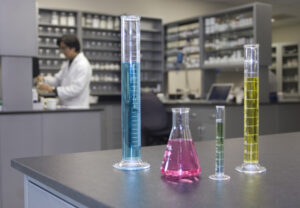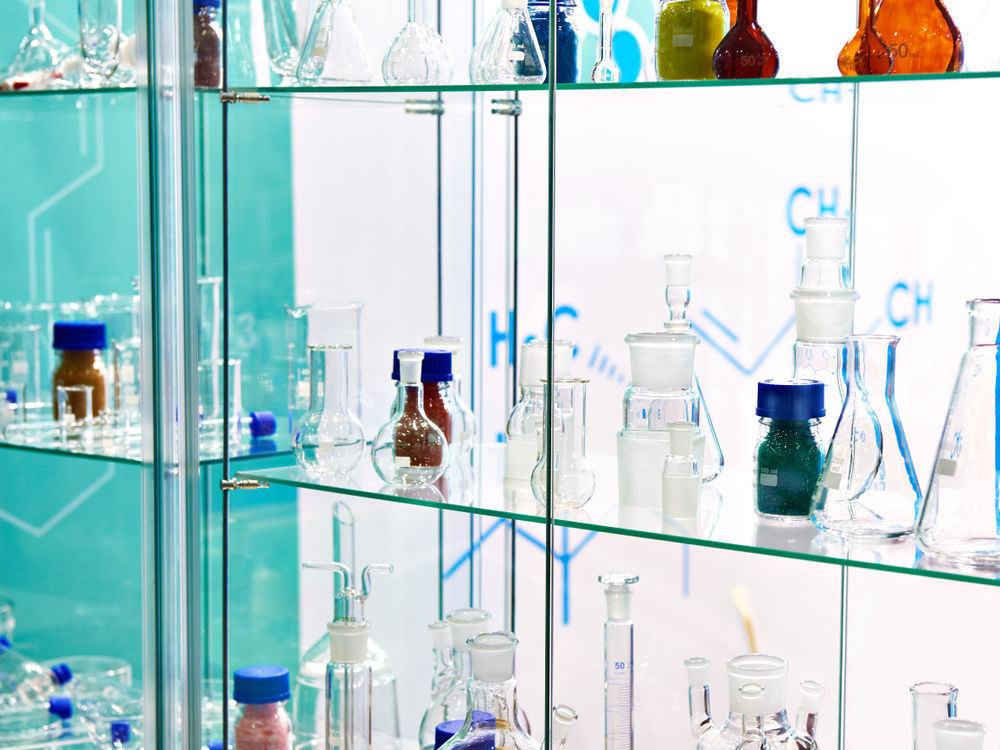
In the world of laboratory design, the choice of furniture and storage solutions plays a crucial role in creating an environment that seamlessly blends functionality with aesthetics. Among the numerous alternatives available, glass wall cabinets stand out as a versatile and visually striking option.
This article looks at the dual role played by glass laboratory cabinets. We’ll explore how they not only enhance the aesthetic appeal of the laboratory but also serve essential functional purposes.
Glass laboratory cabinets are a sophisticated addition to any scientific workspace. They provide transparency for quick visual checks, as well as contributing to a polished and professional atmosphere. We will also address key considerations for those considering the installation of glass cabinets in their laboratory settings.
Join us on a journey that reveals the art and science behind how glass laboratory cabinets are integrated. This journey will give you valuable insights into the factors that should guide your decision-making process. Discover how these cabinets can be customized to meet specific needs, enhance organizational efficiency, and contribute to the overall success of a modern and aesthetically pleasing laboratory.
The primary purpose of glass wall cabinets in labs is to provide a secure and organized space for storing fragile glassware, chemicals, and other laboratory supplies. These cabinets are designed with transparent glass panels, allowing visibility of the contents inside while maintaining a professional and clean appearance. Here are several considerations and benefits associated with incorporating glass wall cabinets in a lab.
Visibility and Transparency
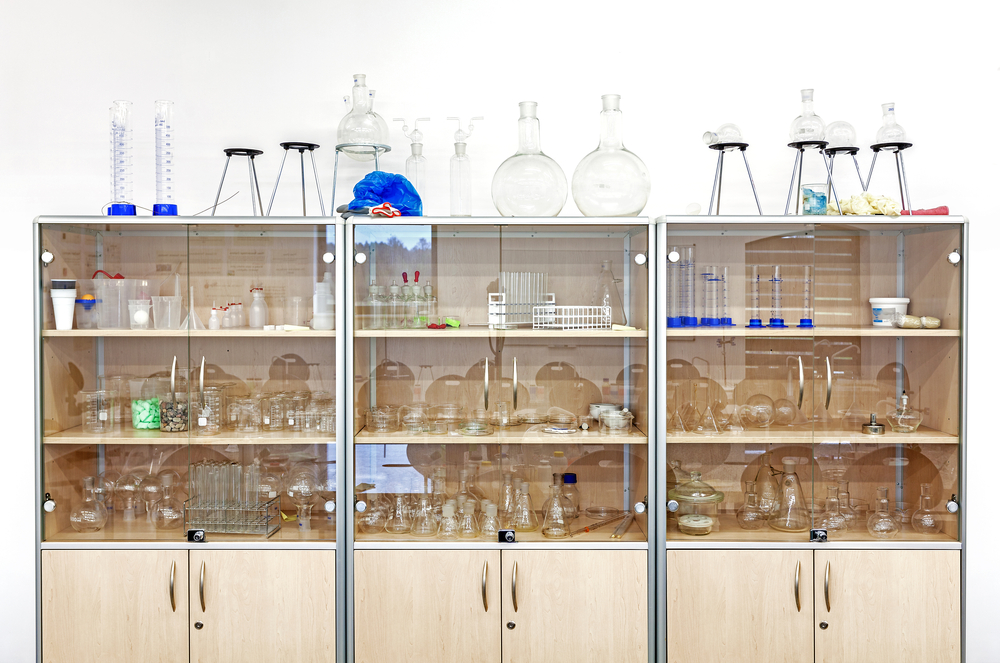
Glass wall cabinets offer clear visibility of stored items, promoting transparency and easy identification of materials. This feature is particularly beneficial in laboratories where visual inspection of items is crucial.
- Observation
Glass cabinets allow researchers, students, or lab personnel to observe and locate lab equipment, chemicals, specimens, and other contents without having to open the cabinet doors. This is particularly useful for quickly locating specific equipment, chemicals, or tools.
- Safety
The transparent nature of glass wall cabinets promotes safety by enabling easy visual checks of stored materials, ensuring compliance with safety protocols, and reducing the risk of accidental spills or contamination. Glass provides a protective barrier, preventing contamination or damage to stored items while still allowing for observation.
Aesthetics and Professionalism
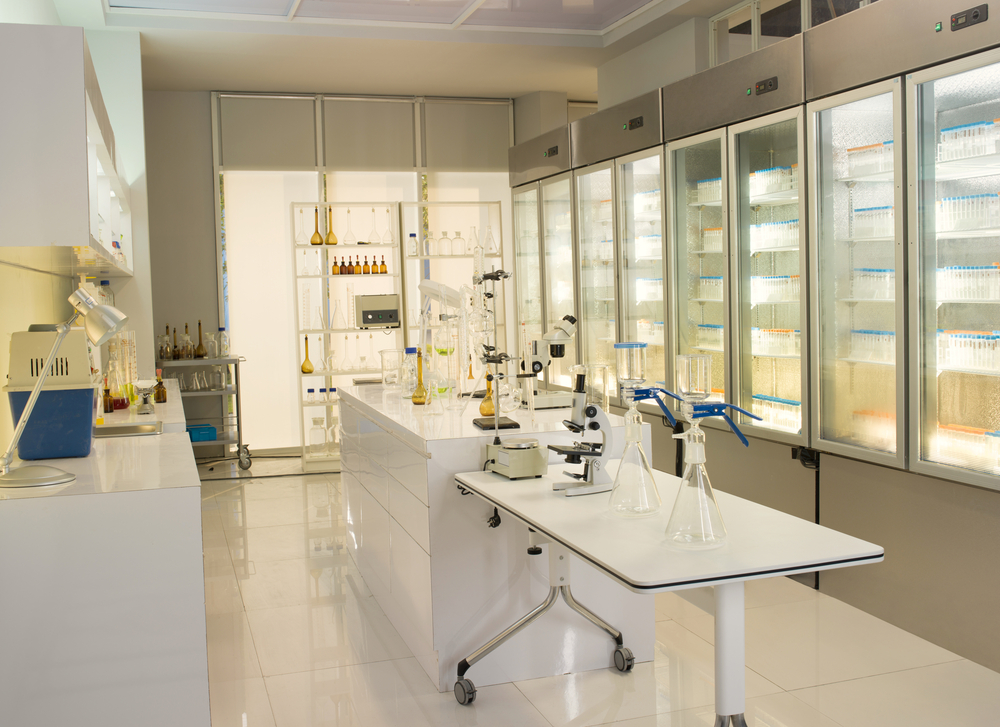
The transparent nature of the cabinets can make the space feel more open and inviting. Glass wall cabinets can be integrated with other laboratory furniture and equipment to create a cohesive and functional workspace.
- Sleek Design
Glass cabinets provide a modern and professional aesthetic to the laboratory environment, which can enhance the overall image of the lab.
- Design Versatility and Customization
Glass cabinets can be designed with different finishes, colors, or patterns to complement the overall laboratory design and theme. They come in various designs and sizes, ranging from sleek, clean, and modern lines to more traditional styles, allowing for customization to match the lab’s specific needs, while maintaining an aesthetically pleasing design.
Key Features of Glass Wall Cabinets in Labs
- Glass Doors
Many cabinets have glass doors to allow easy visibility of the contents without the need to open the cabinet. This is especially useful for quickly locating specific items. Many lab cabinets have sliding glass panel doors,
- Adjustable Shelves
The shelves inside the cabinets can be adjustable to accommodate different sizes of glassware and equipment.
- Ventilation
Some cabinets may have ventilation systems to ensure proper airflow and prevent the buildup of fumes or odors from chemicals stored inside.
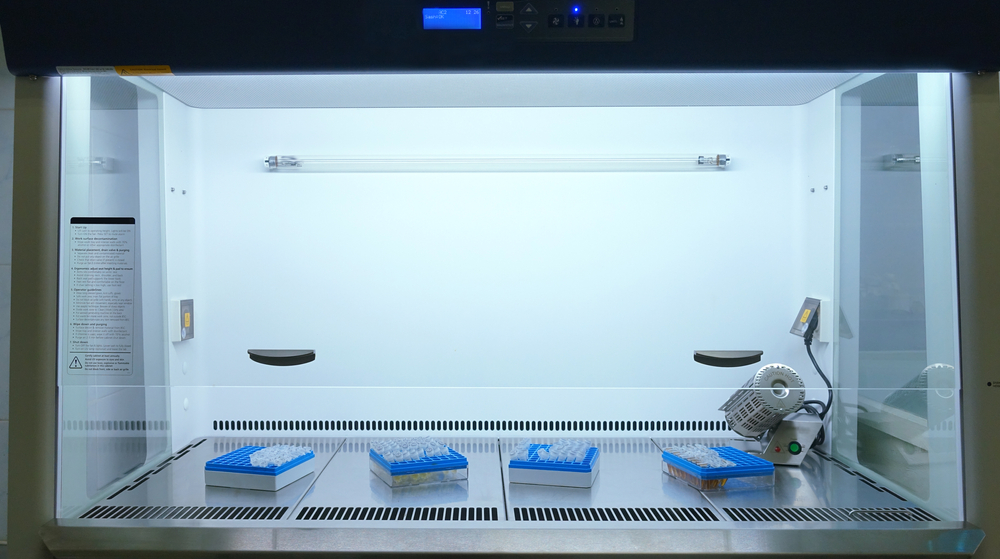
Organization and Display
Glass wall cabinets can be designed to showcase organized arrangements of lab equipment, tools, or specimens. This contributes to functionality and adds an aesthetic element to the laboratory, making it visually appealing.
- Display and Accessibility
When compared to storage space where items are hidden behind solid doors, wall cabinets with glass fronts provide a clear view of the contents, making it easier to organize items and locate them quickly. This enhances efficiency in daily lab operations.
- Lab Workflow
Properly organized glass cabinets contribute to an efficient workflow by ensuring that necessary equipment and supplies are easily accessible.
- Showcasing Equipment
Glass wall cabinets allow for the display of specialized or aesthetically interesting laboratory equipment, adding a unique visual element to the space.
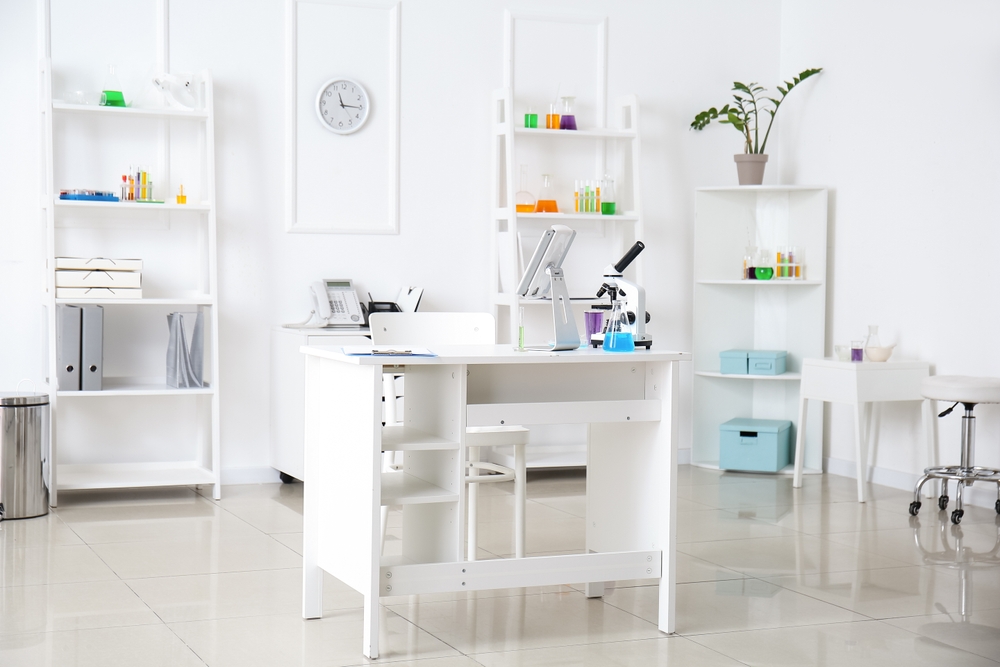
- Collaboration Spaces
Glass lab cabinets can be incorporated into collaborative spaces within the laboratory. These spaces can serve both functional purposes for collaborative work and aesthetic purposes by creating visually appealing focal points.
Lighting Integration
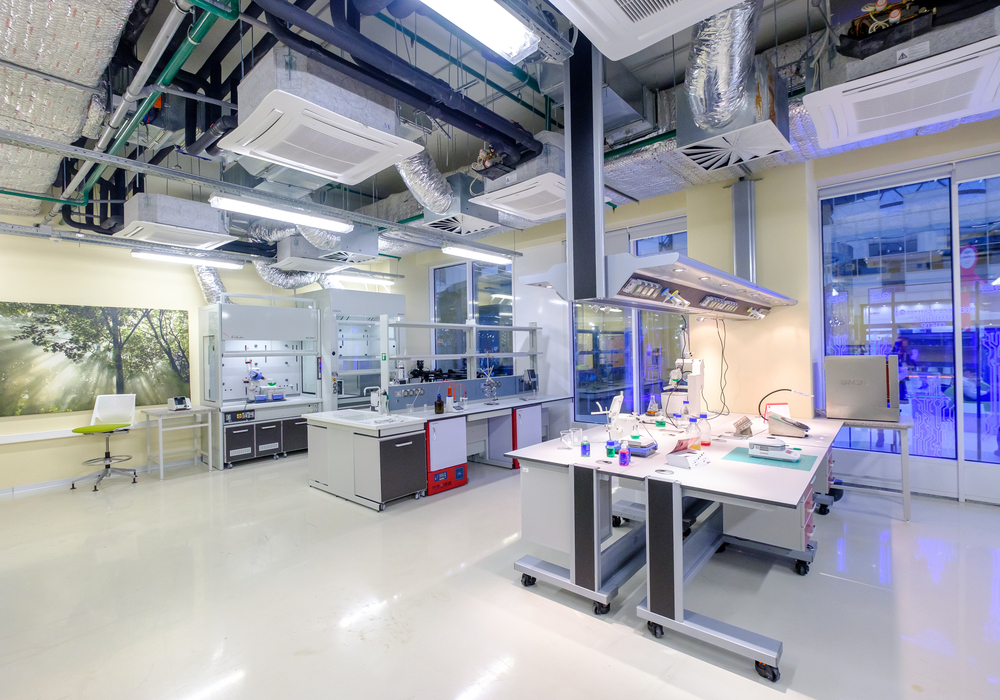
Glass cabinets can be designed with integrated lighting, which enhances visibility and adds an aesthetic touch. Well-placed lighting within or around glass cabinets can enhance the overall look of the laboratory, making it brighter and more inviting.
Incorporating LED lighting into glass laboratory cabinets and open shelving can enhance visibility. This is especially beneficial for cabinets located in areas with less natural light.
Proper lighting can highlight important items and create a more visually pleasing atmosphere in the laboratory.
Material Considerations for Glass Wall Cabinets in Labs
Glass cabinets are suitable for various laboratory settings, including those where chemical resistance and easy cleaning are essential. The type of glass and the framing material can be chosen to match the overall aesthetic of the laboratory, while the following aspects bring functionality.
- Durability: High-quality glass materials are durable and resistant to corrosion, ensuring the longevity of the cabinets in a laboratory setting.
- Safety Glass: Glass lab cabinets are made with tempered or safety glass for added safety. In the event of breakage, these types of glass fracture into small, dull pieces, reducing the risk of injury.
- Chemical Resistance: Glass that is resistant to chemicals is commonly used in the laboratory to ensure the integrity of the cabinet over time.
- Thermal resistance: Glass laboratory wall cabinets may need to provide insulation to protect sensitive substances from temperature fluctuations in the surrounding environment. Thermal resistance helps in preventing heat transfer, ensuring that the interior of the cupboard remains at a stable temperature.
- Security and Control: Secure locking mechanisms on glass wall cabinets help control access to sensitive materials or equipment, ensuring the safety and integrity of the lab and restricting access to authorized personnel only.
Maintenance and Cleaning
Glass wall cabinets offer several benefits when it comes to cleaning and maintenance.
Easy Maintenance
Glass surfaces are typically easy to clean up and maintain, contributing to a hygienic and well-maintained laboratory environment.
Durability
Lab cabinet glass is typically durable and resistant to scratches or damage, ensuring the cabinets maintain their aesthetic appeal over time.
Compliance and Regulations
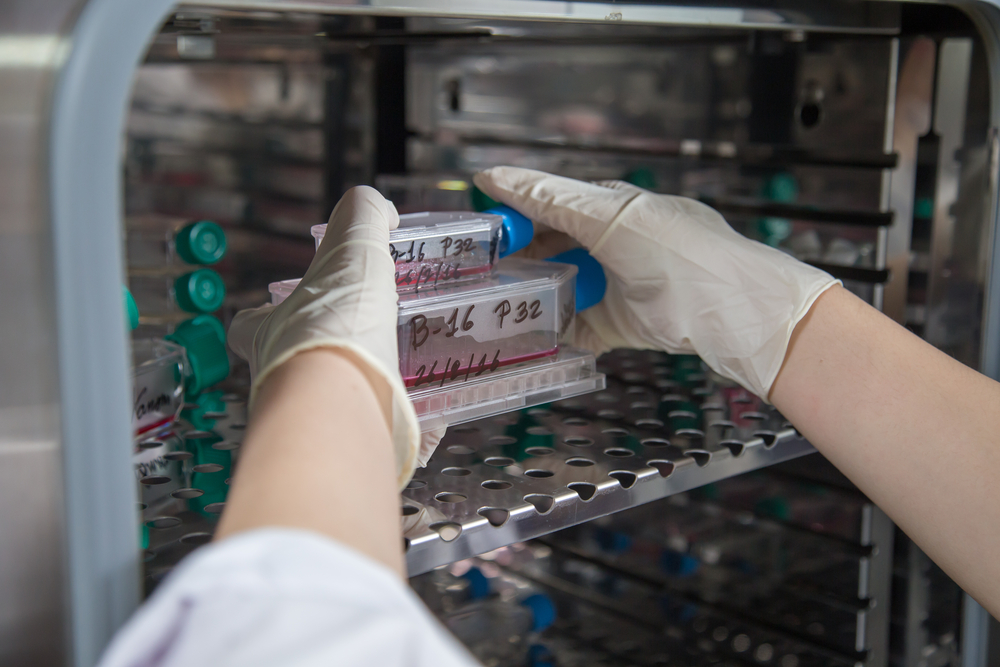
Safety regulations for glass wall cabinets in science laboratories are typically designed to ensure the protection of individuals working in the lab environment. Compliance minimizes the risks associated with glass breakage and potential exposure to hazardous materials.
The design and materials of glass wall cabinets must comply with relevant safety and regulatory standards in the laboratory setting, such as OSHA and ANSI.
While specific regulations and building codes can vary by region and institution, the primary regulatory body responsible for laboratory safety in the United States is the Occupational Safety and Health Administration (OSHA).OSHA sets and enforces safety and health standards to ensure a safe working environment across various industries, including laboratories.
However, the American National Standards Institute (ANSI) publishes laboratory safety standards that apply to clinical and chemical labs, testing labs, and research and development labs in both industrial and educational facilities
In Summary
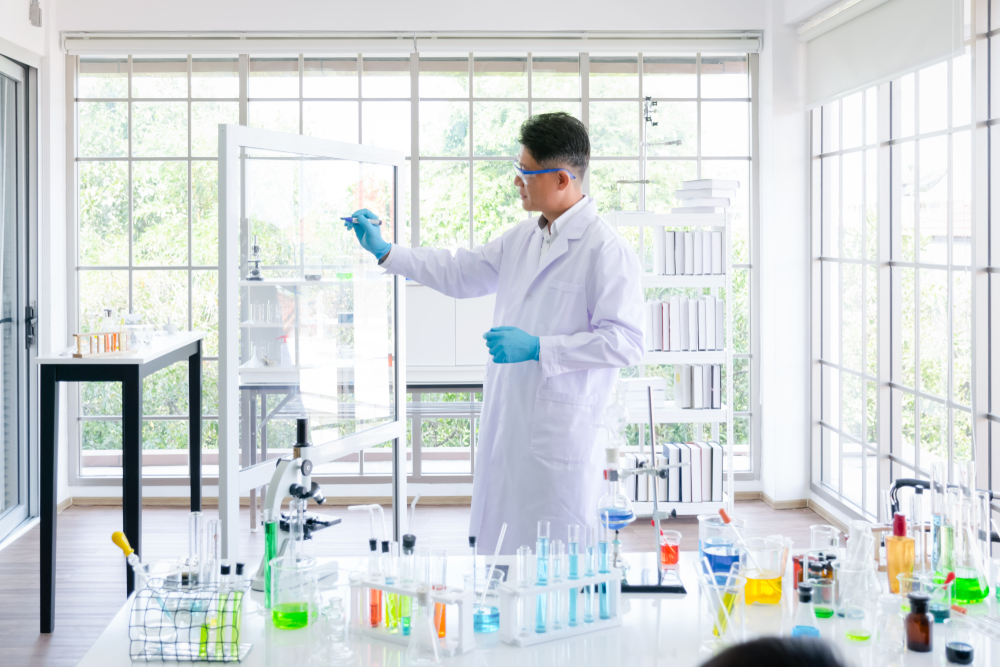
With thoughtful design and consideration of both functional and aesthetic elements, glass wall cabinets in science laboratories can successfully merge form and function, contributing to an efficient and visually pleasing workspace.
Whether it is a remodel project or a new lab, glass wall cabinets provide an organized workspace while facilitating efficient workflow and safety. When carefully selected and integrated into the laboratory design, tall-standing, lower- and upper cabinets contribute to a professional and modern laboratory environment.
When selecting glass wall cabinets for a laboratory, it’s important to consider the specific requirements of the lab, the types of materials to be stored, and any safety regulations that may apply.
Additionally, consulting accredited laboratory furniture experts or suppliers can provide valuable insights into the available options and best practices for integrating glass cabinets into the lab space. Moreover, specialist lab cabinetmakers can customize glass wall cabinets to fit seamlessly with stainless-steel countertops and other cabinetry, built-in or freestanding, to meet the functional and aesthetic requirements of the laboratory.


